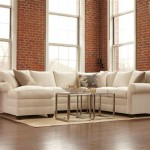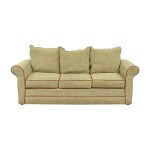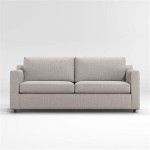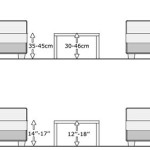Feet to Raise Sofa Height: An In-Depth Guide
Raising the height of a sofa can be a practical and aesthetically pleasing solution to various issues, ranging from improving ergonomics to updating the overall style of a living space. The use of furniture feet, specifically designed to elevate sofas, offers a diverse range of options in terms of material, style, and functionality. This article delves into the considerations involved in selecting and installing feet to raise sofa height, exploring the benefits, the various types available, and the steps for a successful implementation.
Understanding the Benefits of Elevated Sofa Height
Increasing the height of a sofa can provide several advantages, impacting both comfort and visual appeal. One of the primary benefits is improved ergonomics. A higher seating position can make it easier to sit down and stand up, particularly for individuals with mobility issues or those who are taller. This reduced strain on joints and muscles can contribute to a more comfortable and supportive seating experience. Furthermore, raising a sofa can enhance accessibility for cleaning underneath, preventing dust and debris buildup and promoting better hygiene.
From a design perspective, raising a sofa can dramatically alter the aesthetic of a room. Taller legs can create a more open and airy feel, making a space appear larger and less cluttered. This is particularly useful in smaller living areas where maximizing visual space is crucial. The selection of different leg styles can also contribute to a specific design theme, whether it be modern, minimalist, traditional, or eclectic. Replacing existing legs with higher or more stylish options represents a relatively inexpensive way to refresh the look of a sofa and update the overall room décor.
Beyond comfort and aesthetics, raising a sofa can also address practical concerns. In some cases, the existing sofa height might simply be too low for the user's preference or to accommodate specific activities, such as watching television or engaging in conversation. Increasing the height ensures a more comfortable viewing angle and promotes better posture during these activities. Raising the height can also allow for the easy addition of under-sofa storage solutions, maximizing space utility in smaller homes or apartments. The added clearance provides ample room for storage bins or other containers, offering a discreet and accessible storage option.
Exploring Different Types of Sofa Feet
The market offers a wide variety of sofa feet designed to raise sofa height, each with its own unique characteristics and suitability for different styles and purposes. These can be categorized primarily by material, design, and attachment method. Understanding these differences is essential for selecting the right feet for a specific sofa and desired outcome.
Wooden sofa feet are a classic and versatile choice. They can be crafted from a variety of woods, such as oak, maple, beech, and walnut, each offering a distinct grain pattern and color. Wooden legs can be stained or painted to match existing furniture or to create a contrasting accent. The design options for wooden legs are extensive, ranging from simple tapered styles to more ornate carved designs. The durability of wooden legs depends on the type of wood used and the quality of the finish, but generally, they provide a stable and long-lasting solution for raising sofa height. Wooden legs are often favored for traditional or transitional décor styles.
Metal sofa feet offer a more modern and contemporary aesthetic. They are typically made from steel, aluminum, or chrome, providing a sleek and industrial look. Metal legs are available in various finishes, such as brushed nickel, polished chrome, and matte black, allowing for customization to match existing metal accents in the room. The design options for metal legs include straight, angled, and hairpin styles, each contributing a unique visual appeal. Metal legs are known for their strength and durability, often capable of supporting significant weight. They are well-suited for minimalist, industrial, and modern décor styles.
Plastic sofa feet are a budget-friendly and functional option. While they may not offer the same aesthetic appeal as wood or metal, they can be a practical choice for raising sofa height, particularly in situations where durability and affordability are the primary concerns. Plastic legs are typically made from high-density polyethylene or polypropylene, offering resistance to moisture and impact. They are available in a variety of colors and simple designs. Plastic legs are easy to install and maintain, making them a convenient option for DIY projects. They are often used in basements, playrooms, or other areas where a more casual and practical aesthetic is desired.
Beyond these primary materials, other options include acrylic or Lucite sofa feet, which offer a transparent and modern look, and decorative resin feet, which can be molded into intricate designs and finished with various colors and textures. The choice of material ultimately depends on the desired aesthetic, budget, and functional requirements.
Step-by-Step Guide to Installing Sofa Feet
Proper installation of sofa feet is crucial for ensuring stability and safety. The process typically involves removing existing feet (if any), measuring and marking the desired location for the new feet, attaching the feet using appropriate hardware, and testing the stability of the sofa. Following these steps carefully will ensure a secure and professional-looking result.
The first step is to prepare the sofa for installation. This involves carefully tilting or flipping the sofa to access the underside. It is important to protect the flooring with a drop cloth or blanket to prevent scratches or damage. If the sofa already has feet, they need to be removed. This can usually be done by unscrewing them or, in some cases, by prying them off with a flathead screwdriver. Note the type of attachment mechanism used for the original feet, as this will inform the selection of appropriate hardware for the new feet.
Next, measure and mark the desired location for the new feet. Use a measuring tape to ensure that the feet are evenly spaced and aligned with the corners of the sofa frame. Mark the exact spot where each foot will be attached using a pencil. This is a critical step for ensuring stability and a balanced appearance. Consider the weight distribution of the sofa when determining the placement of the feet. Areas that support more weight should have stronger or more securely attached feet.
The method of attaching the new feet will depend on the type of hardware used and the construction of the sofa frame. Common attachment methods include screwing the feet directly into the frame, using threaded inserts, or using mounting plates. If screwing directly into the frame, use screws that are long enough to provide a secure hold but not so long that they penetrate the upholstery on the other side. Threaded inserts provide a more secure and professional-looking attachment. These inserts are typically hammered or screwed into pre-drilled holes in the frame, allowing the feet to be screwed into the inserts. Mounting plates are another option, providing a wider surface area for distributing weight and securing the feet to the frame. The choice of attachment method will depend on the type of feet being installed, the construction of the sofa, and the desired level of stability.
Once the feet are securely attached, carefully flip the sofa back into its upright position. Test the stability of the sofa by gently rocking it and applying pressure to different areas. If any wobble or instability is detected, re-tighten the screws or adjust the feet as needed. Ensure that all the feet are making even contact with the floor. If the floor is uneven, shims can be used to level the sofa and prevent rocking. A spirit level can be used to verify that the sofa is level. Finally, inspect the installation to ensure that the feet are securely attached and that there are no loose screws or other potential hazards.
By carefully selecting the right type of feet and following these installation steps, it is possible to successfully raise sofa height and achieve the desired improvement in comfort, aesthetics, and functionality. Regular inspection and maintenance of the feet will ensure long-lasting stability and safety.

Furniture Risers By Stander Elevelate A Bed Couch Or Chair

Household Hardware Replacement Raise Height Table Feet Chrome Legs Sofa Leveling Foot Furniture 60mm Com

Household Hardware Replacement Raise Height Table Feet Chrome Legs Sofa Leveling Foot Furniture 60mm Com

Furniture Replacement Raise Height Hardware Adjustable Sofa Leveling Foot Legs Table Feet White 18cm Com

The Ergonomic Sofa New York Times

Raise Height Hardware Sofa Leveling Foot Furniture Legs Table Feet Adjustable

Prescott View Home Reno Add Legs To Couches

3 Ways To Raise The Height Of A Table Wikihow

7 17 5cm Furniture Legs 4 Modern Metal Diamond Triangle Feet Diy Replacement For Cabinet Cupboard Sofa Couch Chair Ottoman M Catch Com Au

Furniture Levelers Adjustable Leveling Feet Sy Carbon Steel Sofa Chair Leg Raiser With Wrench And Felt Pads Bed Cabinet Leveler For Table Desk Temu United Kingdom








